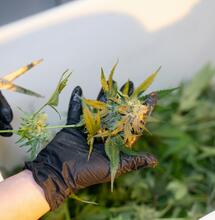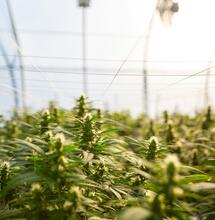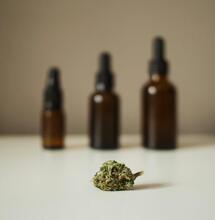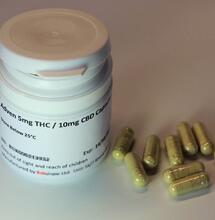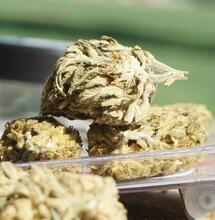Digital Farming Tool can Test Crops for THC Levels
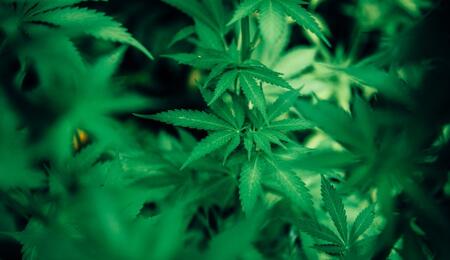
farmers can test crops for THC content and sex
THC content and plant gender can be determined without waiting for a lab to process the data using a small handheld tool; Farmers have the power to self-test, saving them weeks of valuable time waiting for lab testing results.
The process uses a handheld device using Raman spectroscopy. This is an analytical lab technique where scattered light from a laser is utilised to measure the vibrational modes of molecules that help detect the plant's chemical composition, providing a chemical fingerprint.
The handheld device has a database comprising millions of data points. You scan the living plant tissues in a non-invasive test. The scan then produces a spectrum that is read by the algorithms and produces a result."
Official data shows that in 2019 over 4,000 acres, the equivalent of 243,00 hemp plants, were destroyed for turning "hot". In 2020, this number increased to 6,234 acres despite fewer acres being planted. Estimates suggest this number could be beyond 10,000 acres destroyed in future years.
Going "hot" means that the THC % of the hemp has passed the legal limit of having 0.3% total THC that allows it to be processed and sold.
Hemp farmers can usually single out "hot" hemp. However, thousands of dollars are often wasted by the time it becomes apparent. In some states, however, a large "percentage" of hot hemp biomass eventually makes it into the regulated cannabis market. It is used in vape pens or other products.
This revolutionary tool permits farmers to find out if their crop has passed the 0.3% THC level or is about to before they get a COA [certificate of analysis]. Farmers can fully understand when they may need to harvest or if it's too late. In this case, they now have additional time to develop a plan B rather than just destroying the whole crop.
The scanner can also identify male, female and hermaphrodite hemp plants. It does this by detecting varying amounts of carotenoids. Carotenoids are orange, yellow and red fat-soluble pigments in specific plant varieties, including cannabis.
The concentration of carotenoids tends to be highest in female cannabis plants—hermaphrodites, on the other hand, present with the lowest carotenoid levels. Male plants come in somewhere in the middle. Gender is a contentious issue in the hemp world, with efforts being made to ban male hemp plants altogether.
Cross-pollination from rogue male plants creates issues and damages farmers and processors mainly focused on producing CBD and other non-psychoactive cannabinoids. A pollinated hemp crop can lose up to 50% of its biomass and roughly 30% of its full cannabinoid content.
This scanning technology may revolutionise the cannabis testing industry further by lessening the environmental impact made by chemicals and solvents that are used in lab testing. Omn site testing can reduce transportation and other costs, lowering the industry's carbon footprint.
